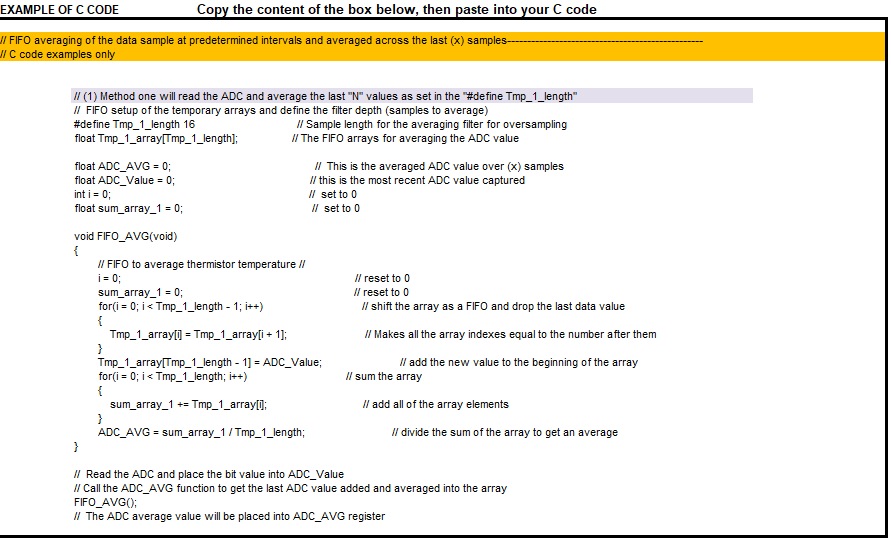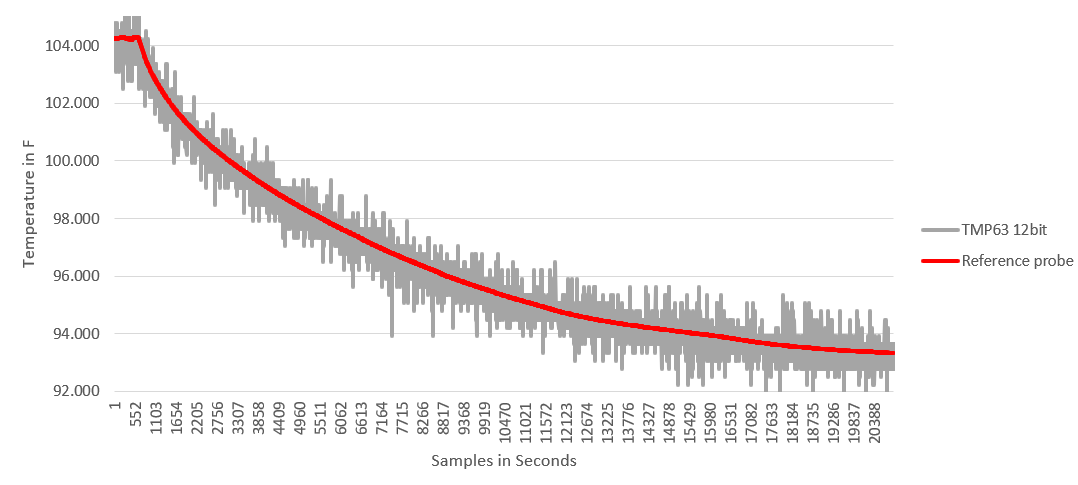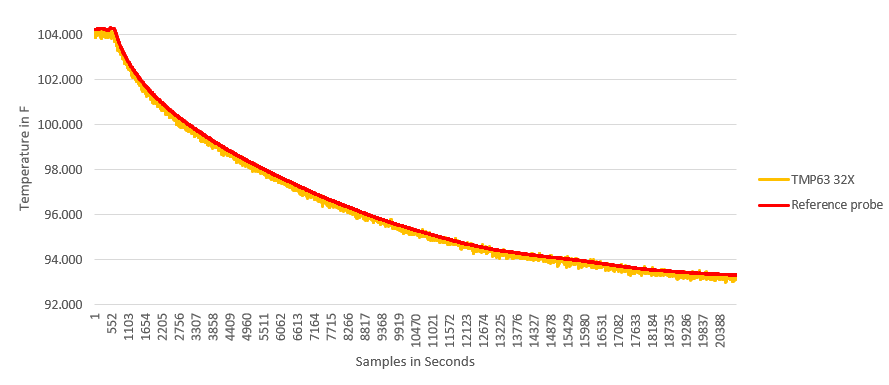SBOU246 January 2022 TMP61 , TMP61-Q1 , TMP63 , TMP63-Q1 , TMP64 , TMP64-Q1
3.2 Oversampling
Oversampling and averaging temperature measurements in a first-in-first-out (FIFO) sequence can improve measurement resolution and signal-to-noise ratio. This is recommended when using less than a 12-bit ADC, although it can applied to 12-bit or 14-bit ADCs, as well. After the ADC reads the bit value and your code calculates the temperature, you can store that value in an array. As a new value comes into the array, the oldest sample is dropped as all the other samples are shifted to the next corresponding cell, thus creating a FIFO. The averaging method can be applied to any of the values used in temperature conversion such as the temperature, the ADC bit value, the divider voltage, or even the calculated resistance. For every 8 oversamples the resolution will increase by 2 bits. 16 oversamples will increase a 10-bit ADC to 14 bits of resolution. The figures below demonstrate two methods on how the oversampling can be implemented. See the Averaging tab of the Thermistor Design Tool for more information.
 Figure 3-3 Oversampling Method 1.
Figure 3-3 Oversampling Method 1.  Figure 3-4 Oversampling Method 2.
Figure 3-4 Oversampling Method 2.  Figure 3-5 Oversampling Example C Code.
Figure 3-5 Oversampling Example C Code.  Figure 3-6 TMP6331 Thermistor Data With No Oversampling.
Figure 3-6 TMP6331 Thermistor Data With No Oversampling.  Figure 3-7 TMP6331 Thermistor Data With 32x Oversampling Applied.
Figure 3-7 TMP6331 Thermistor Data With 32x Oversampling Applied.